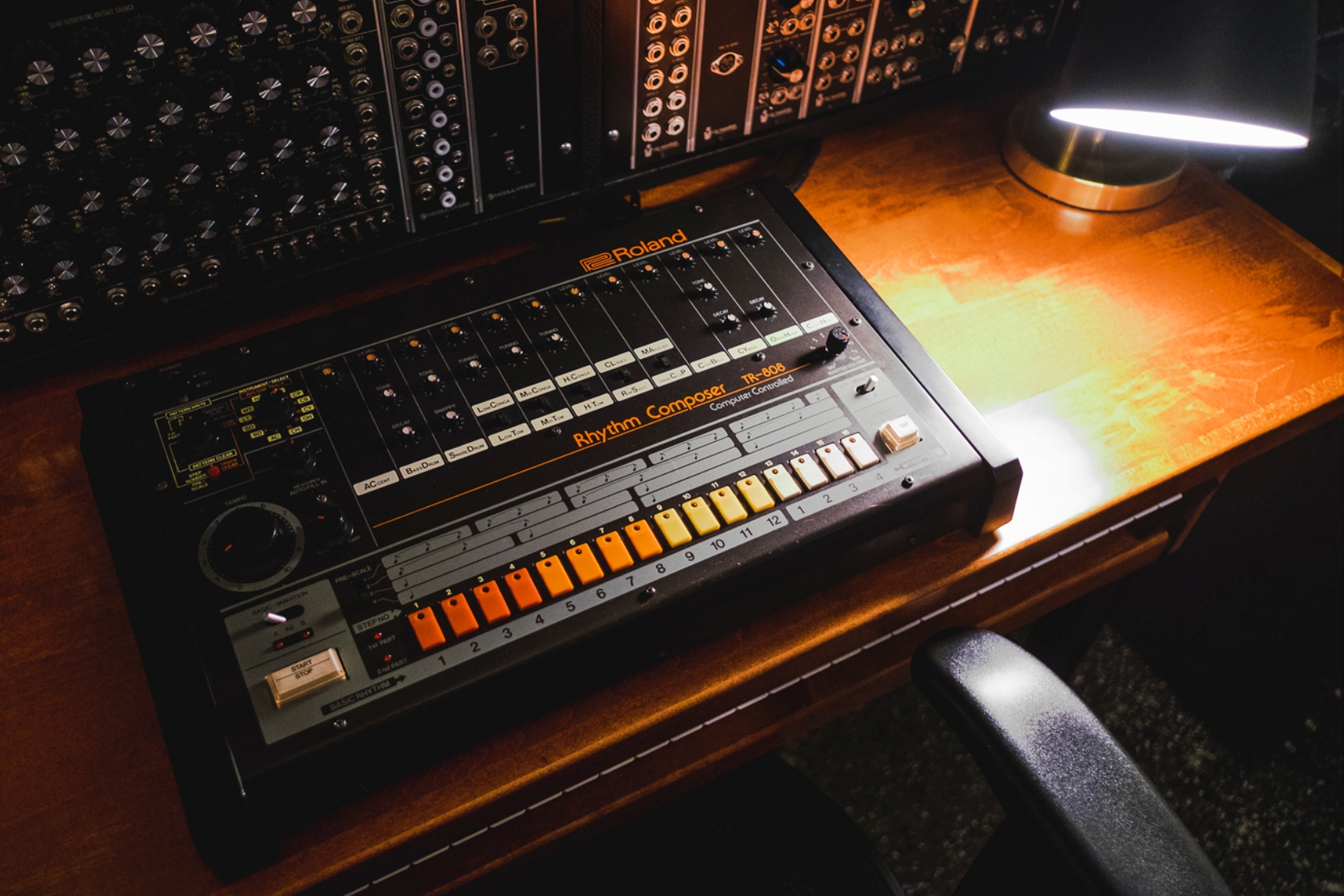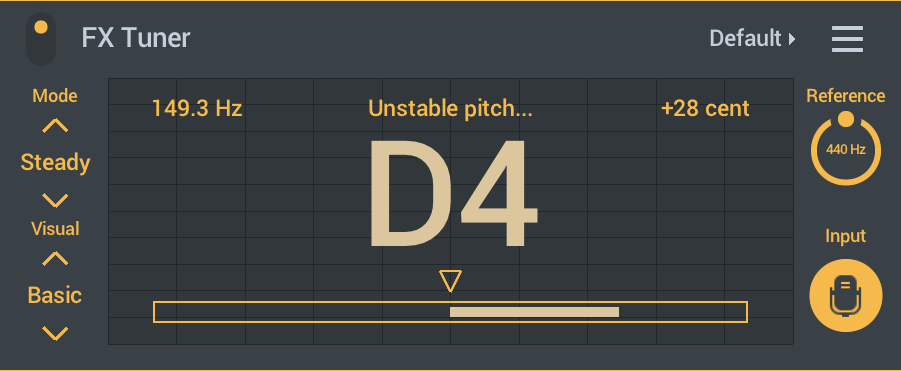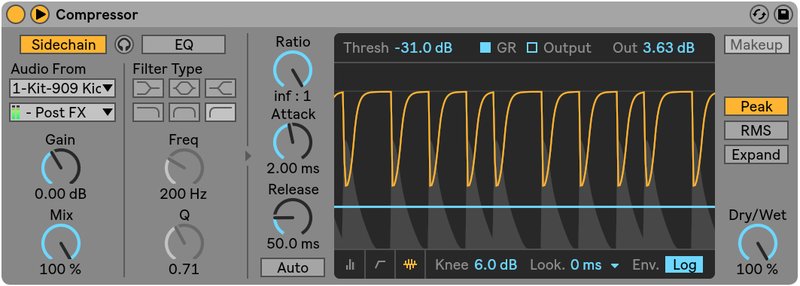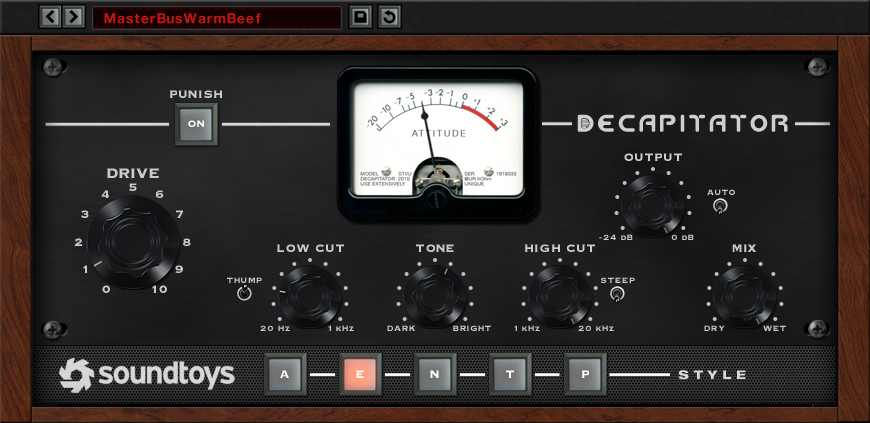How to make Trap Beats Pt. 3 – 808 Basslines
In this final part of our series on making trap beats, we’re going DEEP and giving the LOW-down on 808 basslines. If there’s one defining element to trap music other than the drums, it’s using the 808 kick to create basslines. These long deep 808 bass notes perfectly compliment the high-pitched snappyness of trap drums that also predominantly use 808 drum hits.
If you’ve been following along with our previous guides on trap drums and melodies, it’s time to tackle the final essential element of trap production—the bassline.
The Role of 808s in Trap Music
The 808 drum machine’s journey is a fascinating one. It has gone from being a commercial flop on its release to becoming embraced by the world of Hip-Hop to eventually becoming the cornerstone to Trap music. While the 808 was pivotal to the early sound of Hip-Hop it had fallen out of favour by the 90’s replaced largely by sampled drums. Fast forward to the early 2000’s and producers in the South began to rediscover its charm and ability to sound great on both car stereos and in clubs.

But it was the revolutionary pitching of the 808 bass that’s produced when you extended the decay and resonance of the kick that blew people’s minds. It has the ability to completely fill out the low end of a track while also adding a rhythmic pulse. This is key to achieving that heavy, head-nodding energy. And as this technique was developed using sampled 808 bass notes they could be manipulated in various ways using MIDI. The gliding of one note to another became a particularly popular technique. As trap has developed over the past two decades so has the nature of 808 bassline. Other synth engines are now used to create the 808 sounding bass. They all still stick to the original formula of the 808 and feature a slow-decaying subby bass with a bite to the attack.
Tuning Your 808
One of the most crucial steps to writing killer trap basslines is making sure your 808s are tuning correctly. In trap music, the bassline often carries the melody. This means it’s vital to get the pitch right. An out-of-tune 808 can easily ruin the harmonic cohesion of your track, making it sound amateurish.

Start by matching the key of your melodic sample to the root note of your 808. Many DAWs (digital audio workstations) will include a tuner plugin that will display the exact pitch of your 808 samples and melody. Use this to match the key exactly. Be prepared to fine tune your 808 bass to your sample or vice versa. If you decide to use your ear to match the tuning a good tip is to play the 808 bass note up two octaves. This will make it easier to tune the 808 to the sample.
When deciding the octave and key range, place the 808 at a low enough octave to avoid any clashes with the other instruments. This will help to maintain a clear and spacious-sounding mix. It’s also essential to pay attention to the tail of your 808. Long, sustained 808s can effect the energy of fast-paced tracks, while short, punchy 808s might lack the sustain needed for slower tempos. Take time to adjust the release and decay parameters in your sampler or synth. Your aim is to find tails that fit the tempo and groove of your beat. And finally, on the subject of 808 tails, it’s vital that you set your 808 samples to monophonic. This means that when a new note is played it will cut off the previous one. Just be aware that when low frequencies are suddenly cut off it can produce clicks.
Crafting the Perfect 808 Sound
Sound selection is critical when striving for the perfect 808. Start by choosing a high-quality sample. Aim for a sample that has a very long delay. This way you can add your own envelopes, thus controlling the samples length when played at different pitches. Another option is to synthesise your own 808 using tools like Serum, Massive or even DAW stock plugin. Many synths will even feature 808 like presets to get you started.
You want your 808 to sound full, and rich in low frequencies. Aim for clean 808’s as your foundation as you can always add colour to them later. This is where processing comes into play. Here’s how to refine your 808 to ensure it stands out in the mix:
- EQ: Even if you can’t hear them it’s always worth cutting out the unnecessary high frequencies (typically above 100Hz) Use a steep shelf low pass filter to do this. If you feel the 808 sound isn’t full enough boost the sub-bass frequencies (around 50-80Hz) to give the 808 that deep, floor-shaking power. Go carefully though and make sure you are monitoring on reliable speakers or headphones that have a wide enough frequency range.
- Saturation: Adding some light saturation or harmonic distortion can give your 808 more character. It’s important not to overdo it, though as too much distortion can make your bassline sound muddy or overpower the mix. The goal is to enhance the harmonics without losing the clarity or purity of the sub frequencies.
- Levelling: Adding a touch of compression or limiting to your 808’s can help control any unwanted volume peaks. Just set a threshold that will tame any louder bass notes or glides. You may also want to introduce compression in the form of sidechain compression but more on that later.
Programming Your 808 Basslines
With your 808 now sounding on point, the next step is integrating it into the track. The key is to rhythmically program the 808 so that it sit perfectly with the rest of the elements in your beat. In trap beats, the 808 generally follows the pattern laid down by the kick drum. Placing your 808 bass notes on the kicks helps create a cohesive rhythm that makes everything sound tight and punchy. It also helps drive the energy of the track. While you don’t need to drop an 808 bass note on every kick, 808’s should ideally hit on a drum hit i.e kick, snare, rimshot, clap.
It’s best to start with a simple 808 bass pattern. Program the 808’s on the downbeat or the same spot where the kick hits. Match the note to whatever the melodic content is doing. From here you can start to add more notes to any extra available kicks or drum hits. While using your ear to guide the playing of your 808 bassline is the most common approach there are some hacks worth knowing about. Check out this guide for a useful cheat code for fitting your 808 bassline to your melody.
Trap beats often employ syncopation. For instance, placing 808 hits on off-beats or unexpected parts of the measure. This can help create a sense of dissonance and impart a feeling of tension and groove. Don’t be afraid to leave space in your 808 pattern as less is often more. A sparse 808 bassline can give the rest of the beat a chance to breathe while still giving your beats that all-important low-end depth.
Velocity is another important aspect of programming your 808 basslines. Experimenting with different velocities will add a dynamic range to your basslines. Use different velocities to make certain notes feel heavier and others lighter. Use your ear to gauge which notes you want to boost and which you should reduce. A good idea is to have a quick break from your beat. Then revisit it and if any notes sound too overpowering pull these back and vice versa. Any notes that are getting lost should have their velocity level increased. This subtle variation can help bring your beat to life as well as add balance.
Finally, a popular technique in trap basslines is the addition of glide or portamento to the 808. Glide creates smooth transitions between different pitches. It’s that signature sliding bassline effect heard in countless trap bangers. Most synths and samplers offer a glide feature. Simply adjust the speed and smoothness of the slide to control how much slide there is between notes. Be careful when using this effect. Go sparingly, as you can easily overdo this effect. Aim to only target specific notes rather than every note.
Sitting your 808 Basslines in the Mix
Once you’re happy with the programming of your 808, it’s time to think about how it interacts with the rest of your beat. A good 808 bassline will punch through the mix without overpowering everything else. In this section, we’ll examine some useful techniques to help your 808 sit perfectly within your trap beat.
Sidechaining

One of the biggest challenges when working with 808s is making sure they don’t overpower the rest of the mix. Getting the 808 sub to work seamlessly with the kick is key. Trap beats are all about the low end. The problems arise when your 808 sub and kick are competing for the same frequencies. This is where your beat can start to loose definition and sound muddy. The sidechain compression technique is a handy ally to have in this age old frequency battle.
Sidechaining is a technique where one element in the mix (typically the kick drum) “ducks” the volume of another element (in this case, the 808 bassline) every time the two overlap. This creates a space for the kick to momentarily cut through while letting the 808 provide the deep low-end depth without clashing.
To set this up sidechaining you will need to use a compressor plugin with sidechain functionality. Most DAWs will have a stock compressor that has this capability. Set the kick as the trigger for the compressor and apply it to the 808. Now whenever the kick hits, the 808’s volume will automatically drop slightly. Experiment with the threshold and ratio settings to find the perfect balance—too much compression, and the 808 will disappear; too little, and the kick will get lost.
Distortion
It’s common in Trap to use distortion to add grit and warmth to 808’s. This can give your basslines a more aggressive feel. It also helps the bass melody cut through and be heard when played back on tinny speakers such as those found on small radios, tablets or phones. Soft distortion, like tape saturation or tube drive, can add a slight edge, giving the bassline some more presence. For more extreme effects, try harder clipping or bit-crushing to give the bassline a grittier, distorted sound. Just remember that less is often more when it comes to distortion. You want to enhance the 808 and not distort it beyond recognition.

Chorus or Phaser
Adding modulation effects like a chorus or phaser to your 808 can help create a more unique sound. These effects can help introduce a subtle movement or wobble to your bassline. This can give it a wider, more fluent feel. Like most forms of 808 processing be cautious not to overuse this effect. If overdone, it can make your mix sound messy and disconnected.
Pitch Automation
Automating pitch changes is another way to create movement and excitement in your 808 basslines. It’s a little like portomental glide but the automation offers more control. It’s great for gradually raising or lowering the pitch of your 808 during transitions, drops, or even within the bassline itself.
Summary
So there you have it. Our final instalment to this comprehensive guide to understanding and producing trap beats. Parts 1 and 2 should have set you up with all the information and advice to help you produce the drums and melodics needed for rapper-ready trap beats. With part 3’s focus on the all-important 808 trap basslines you can add the melodic cherry to your trap flavoured cake. The key now is to take these foundational techniques and push the creative limits of your production – “Skrrt”
Remember – RouteNote Create subscriptions start from as little as $2.99. You also get 10 FREE credits to spend on samples along with access to our FREE sample pack bundle when you sign-up!
